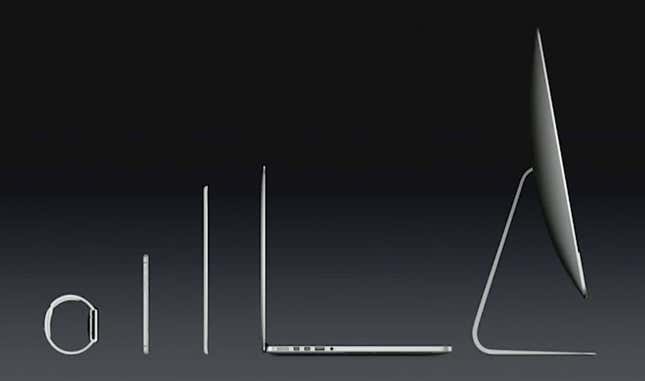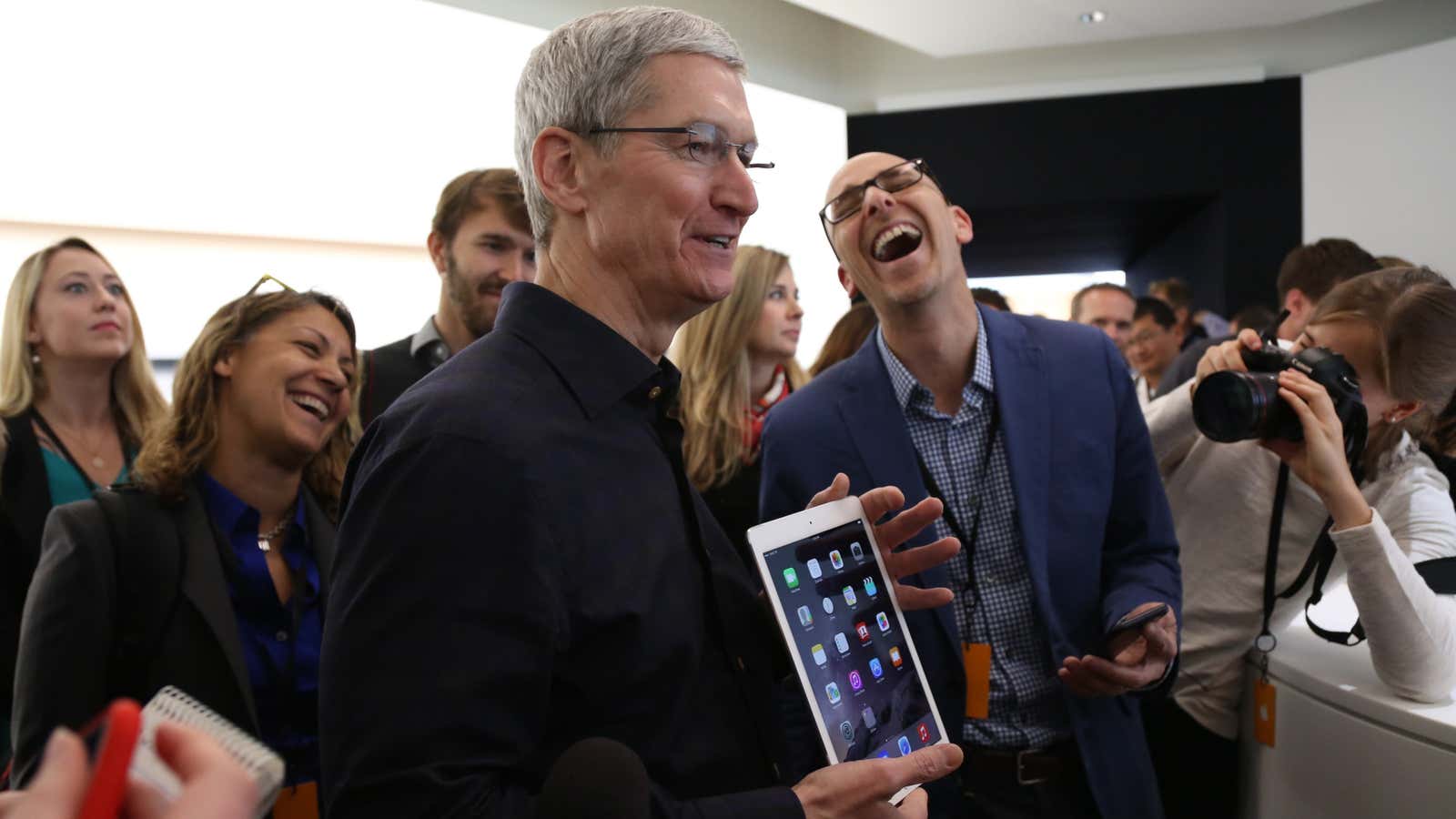The new iPad Air 2 is more than a mere iteration—but the real revolution in the iPad line may be heralded by the introduction of the iPhone 6 Plus.
The new iPad Air 2 looks and feels terrific. Hold an iPad mini in one hand and an iPad Air 2 in the other—they seem to weigh about the same. This is an illusion: The 341 gram mini is lighter than the 444 gram Air 2 (.75 vs .98 pounds; both with cellular equipment), but the Air 2 is almost impossibly thin. At 6.1 mm, the Air 2 makes the mini’s 7.4 mm feel bulky.

The iPad Air 2 also has an improved screen, a better camera, enhanced motion capture, faster processing, and, perhaps most important, it has Touch ID, Apple’s fingerprint recognition system. This is a bigger deal than initially reported. For businesses that have increasingly stringent security requirements, Touch ID is a welcome replacement for annoying password entry and will help in selling iPads to “compliance-burdened” enterprises. (On this, and the rest of Apple’s announcements, see Charles Arthur’s column in The Guardian, IMHO the best overview.)
And liberation from the password or, more important, from lazy security, isn’t limited to IT-controlled environments. I hear from normal humans that they love the Apple Pay + Touch ID combination for their online shopping, an activity that was previously more convenient on a conventional PC.
If a MacBook Air showed up with a comparable pile of improvements, there would be oohs and aahs all over the Kommentariat. Instead, the slimmed-down, sped-up iPad Air 2 has been met with either tepid, supercilious praise (“If the iPad has never appealed to you as a product, the Air 2 probably won’t change your mind”—CNET) or borderline dismissal on the grounds that it won’t fix iPad’s slowing sales (“But it is not clear that making the iPad Air 2 the Twiggy of tablet devices will be enough to reinvigorate Apple’s iPad sales”—NY Times.)
Indeed, after growing faster than anything in tech history, tablets have stalled. For the past three quarters unit sales have plummeted: iPad sales fell by 2.29% in the first (calendar) quarter of 2014 versus the same quarter in 2013, and they fell by 9% in Q2:

(A thank-you to Apple for providing actual unit and revenue numbers for their product lines—does any other company do that?)
When Apple releases its fiscal Q4 numbers on Oct. 20, we’ll find out how “poorly” the iPad did in the July to September period. We don’t expect the numbers to show a turnaround, neither for the quarter and certainly not for the entire fiscal year.
Some folks look at these numbers and question the device’s future (eg Apple iPad Fad is Over.) But technological viability and short-term sales effects are two different topics.
In earlier columns “The iPad Is a Tease” last April and “The Sweet Spot On Apple’s Racket” in August, I tried to separate the merits of the tablet genre, which I see as established and durable, from the unreasonable expectations that arose from the sense of liberation from PC obfuscation. If you see the tablet as a one-for-one replacement for a PC, you’ll be disappointed, and the falling iPad sales will look like an inevitable skid into obsolescence. I flirted with membership in that camp when I accused the iPad of being unsympathetic to “ambitious” users. (My column was “iPad and File Systems: Failure of Empathy“; in my defense, that was in early 2013—eons ago in tech time.)
I’ve since recanted. Instead of a hybrid product as promoted by Microsoft, the sweet spot in Apple’s business model seems to be a tablet and a laptop, each one used for what it does best, unencumbered by hybridization.
As CEO Tim Cook noted last week, Mac sales (laptops, mostly) grew 18% in the last reported quarter. This time, contrary to earlier expectations, it looks like the Mac is cannibalizing the iPad…not a bad “problem” to have. And it’s nothing like the evisceration of iPod sales after the iPhone was introduced. With the advent of the iPhone, the music player became an ingredient, it was no longer a standalone genre.
The new Air 2 won’t put iPad sales back on its previous growth curve…and I don’t think Apple is troubled by this. Making the iPad Air nimbler and more useful, a stand-out in a crowd of tablets, that’s Apple’s strategy, and it’s more than good enough—for the time being.
Talk of Apple’s game plan brings us to the iPhone 6 Plus. (These lengthening product names bring bad memories from the auto industry, but what can Apple do?) Does the new, larger iPhone say something about the future of the iPad mini?
I once thought the mini was the “real” iPad because I could carry it everywhere in a jacket pocket. But about two weeks ago I bought an iPhone 6 Plus, and I haven’t touched my mini since. (As punishment for my sin, I found 52 apps awaiting an update when I finally turned on the mini this morning…) Now I have an “iPad micro” in my (front) jeans pocket…and it makes phone calls.
With the introduction of the iPhone 6 Plus, the iDevices playing field has changed: A broader range of iPhones could “chase” the iPad upward, creating opportunity for a beefier “iPad Pro.” Or perhaps Apple will use its now-proven microprocessor design muscle to make a lighter, nimbler MacBook Air.
Whatever Apple does next, the iPhone 6 Plus might prove to be a turning point.
You can read more of Monday Note’s coverage of technology and media here.
